The grass isn’t always greener on the other side – with the right lawn mower, you can achieve a beautifully cut lawn that will leave your neighbours green with envy! Whether you have a compact lawn or a large back garden to tackle, with this buying guide we will help you to cut through the jargon and find the perfect mower for you.
Size Matters - Size, shape and terrain of your garden
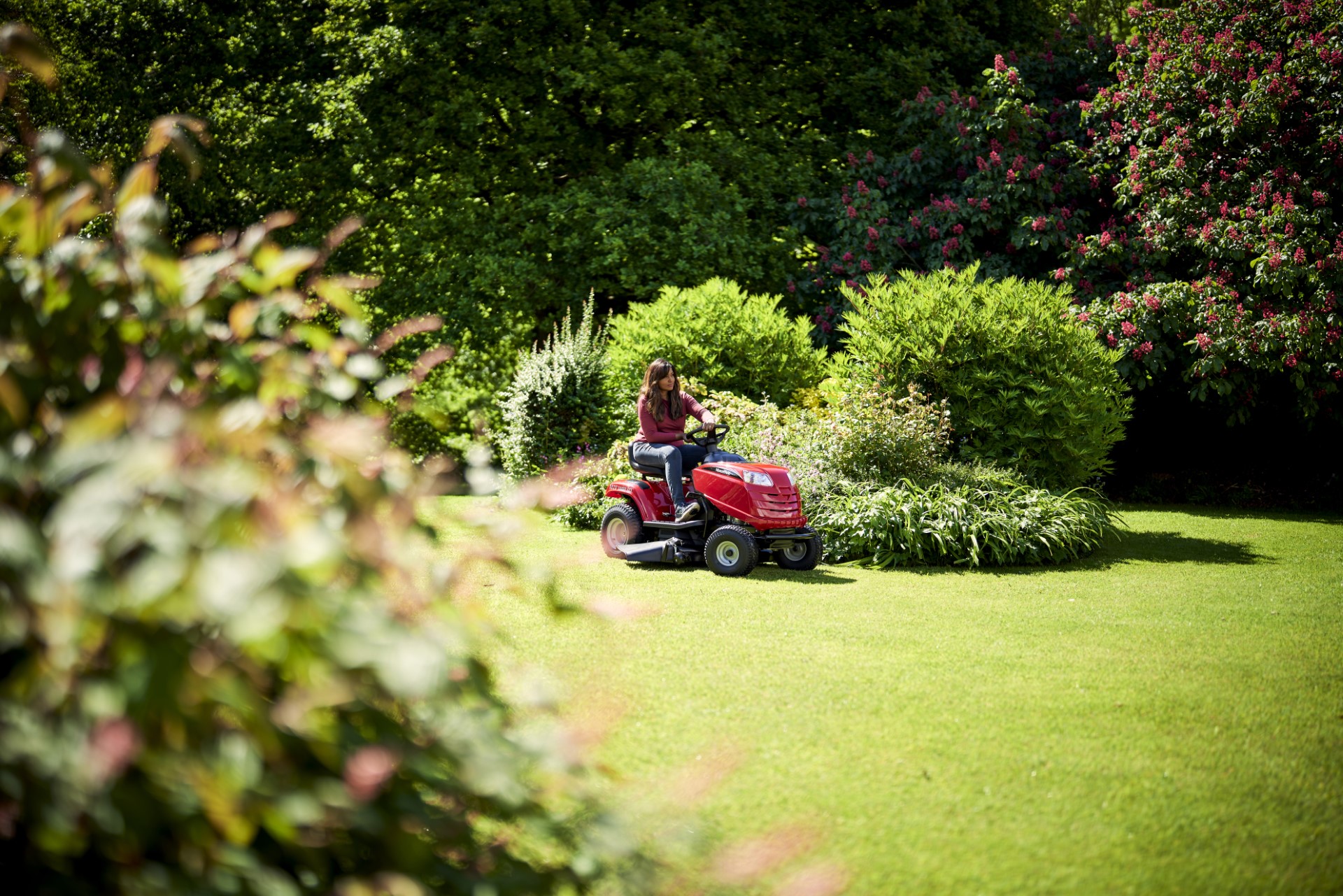
The first thing to consider when choosing your lawnmower is the size of your lawn.
If we use a tennis court as a reference point:
- Small garden - up to half a tennis court (up to 100 sqm)
- Medium garden - up to three-quarters of a tennis court (approx. 100 – 250 sqm)
- Large garden - up to one and a half tennis courts (250+ sqm)
- Extra-Large garden - half an acre or more
For gardens over half an acre in size, we would recommend a ride-on lawnmower as a more appropriate choice. Read our guide ‘choosing the right ride-on lawnmower’.
The Power to Mow - Power (petrol/electric/battery)
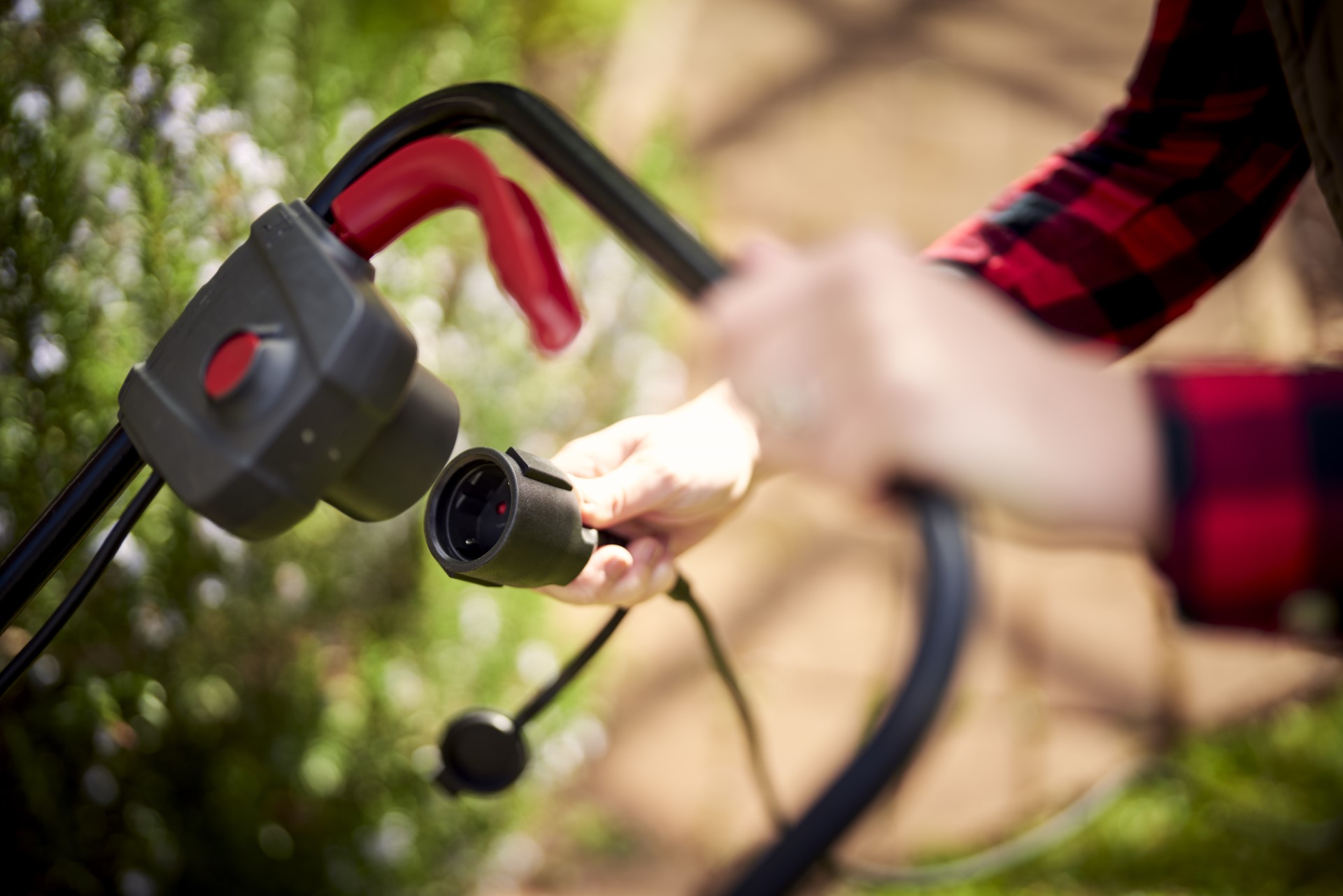
The power source you choose will depend on the size of lawn you are mowing.
Mains electric mowers
Quiet, lightweight, and easy to use, these budget friendly mowers are ideal for smaller-sized gardens.
Pros:
- No batteries to charge/petrol or oil to add
- Virtually maintenance free
- Lightweight and easy to manoeuvre and store
Cons:
- Need a long enough cable or extension cord to cover the garden so they are best suited to smaller sized gardens.
- Easy to mow over the cable or get it tangled in flower beds or bushes etc.
Cordless, battery-operated mowers
with the advances in battery technology battery mowers can now match the performance of petrol with none of the mess and maintenance. With no cable to hold you back they are a popular choice for medium to large-sized gardens.
Pros:
- Total freedom to mow anywhere – great for allotments or other areas with no power source.
- Virtually maintenance free.
- Lightweight and to use
- Several brands including STIGA and Mountfield have sharable batteries that can power their mowers as well as other garden tools in the ranges such as leaf blowers, hedge trimmers etc
Cons:
- Limited battery life – however larger capacity batteries are generally available along with fast charger options. If you have a large lawn a top tip is to purchase one or more spare batteries to charge while the others are in use in order to extend the running time of your mower. The batteries tend to be reasonably expensive however think of them as an investment as if looked after properly they should have a life span of up to 7 years depending on brand and spec. Brands such as STIGA have developed smart battery technology with their ePower batteries – these batteries have been tested beyond industry standards and found to still retain over 80% capacity after 10 years of typical year round weekly usage.
Petrol mowers
The traditional petrol mower remains a firm favourite for larger lawns. Modern petrol engines are easy to start and offer the power and performance needed to mow bigger gardens.
Pros:
- Total freedom to mow anywhere with no cables to hold you back.
- Powerful enough to tackle large and complicated lawns with ease.
- Easy to start engines
Cons:
- The need to purchase and store petrol and oil. Petrol starts to go stale after 30 days (unless a fuel stabiliser is used) and can cause running and engine issues if left inside the mower over long periods such as winter.
- The mess and toxic fumes of petrol, not to mention the limited availability of fossil fuels making petrol mowers the least environmentally friendly option.
- Petrol mowers tend to be heavier and nosier than their electric or battery counterparts.
- Petrol mowers require more maintenance – with things such as spark plugs to change and air filters to clean etc. Petrol mowers need to be drained of fuel when storing over winter and should not be transported with petrol in the tank.
4-Wheel Mulching Magic - Cutting method (collecting/mulching/side-discharge)
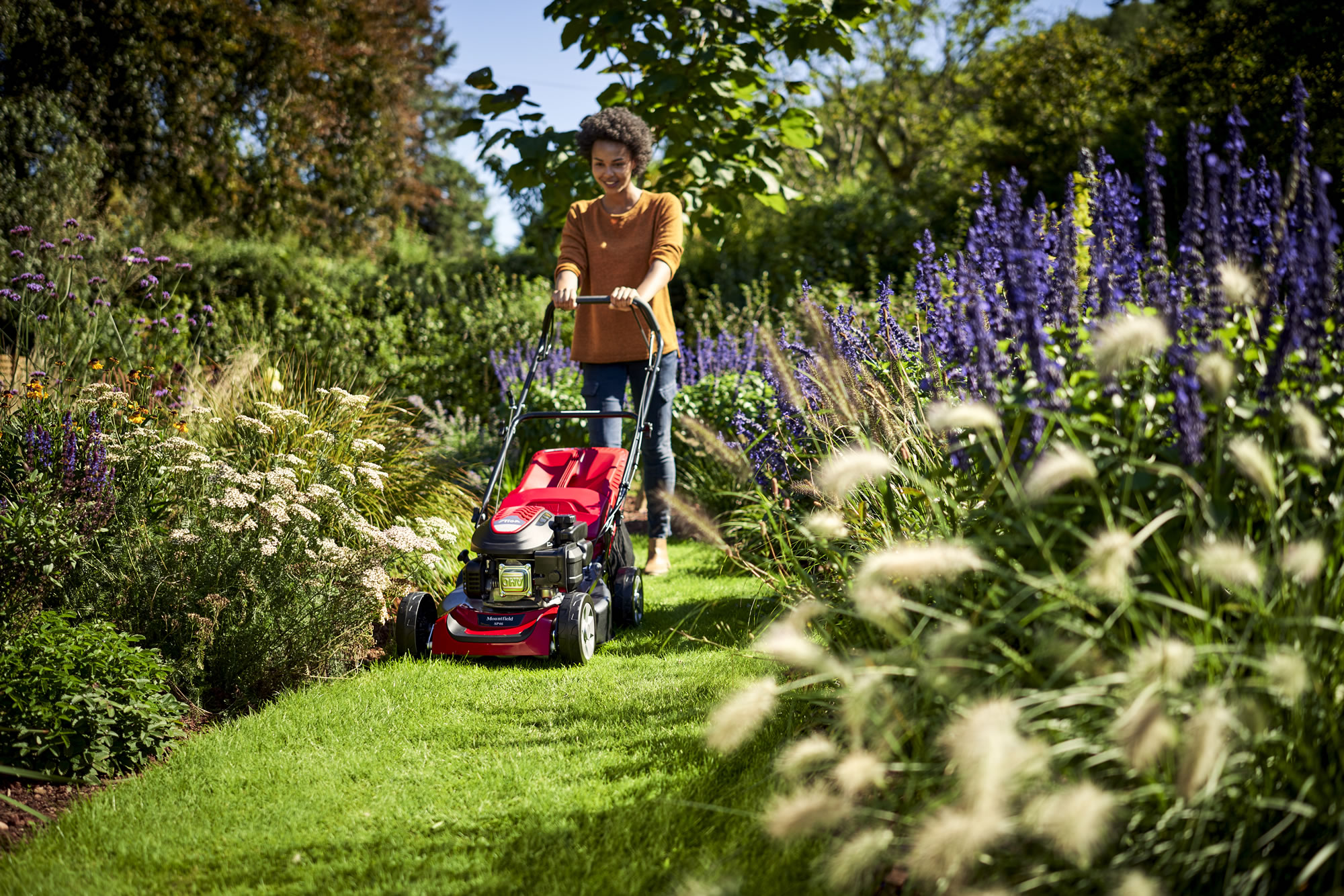
Four-wheeled lawnmowers have two wheels at the front and two at back, rather than a rear roller. They will cut the grass with minimum definition; the lawn will look the same regardless of cutting pattern used, ideal for gardens with undulating lawns. Many models come with ‘anti-scalping’ plates, fitted at the front to stop your mower taking chunks out of your lawn – particularly useful if your lawn is uneven or bumpy. There are two main types of 4-wheeled mowers – those that have the option to both collect the grass and mulch it, and those that are dedicated mulching machines!
Mulching is the process of not collecting the grass clippings, but instead, cutting them into tiny pieces and feathering theses back onto the lawn, Due to being so small, they fall to the bottom of grass blades and act as fertiliser, returning nutrients to the soil and promoting growth.
Mulching is particularly useful for larger lawns – with no stopping to empty the grass catcher you can quickly whizz through the mowing.
Some mowers are described as ‘4-in-1’, meaning they have 4 cutting options – they collect the grass, mulch and side and rear discharge. If you want to be able to switch between mulching and collecting grass clippings these multi-functional machines are a great choice.
Cutting finish
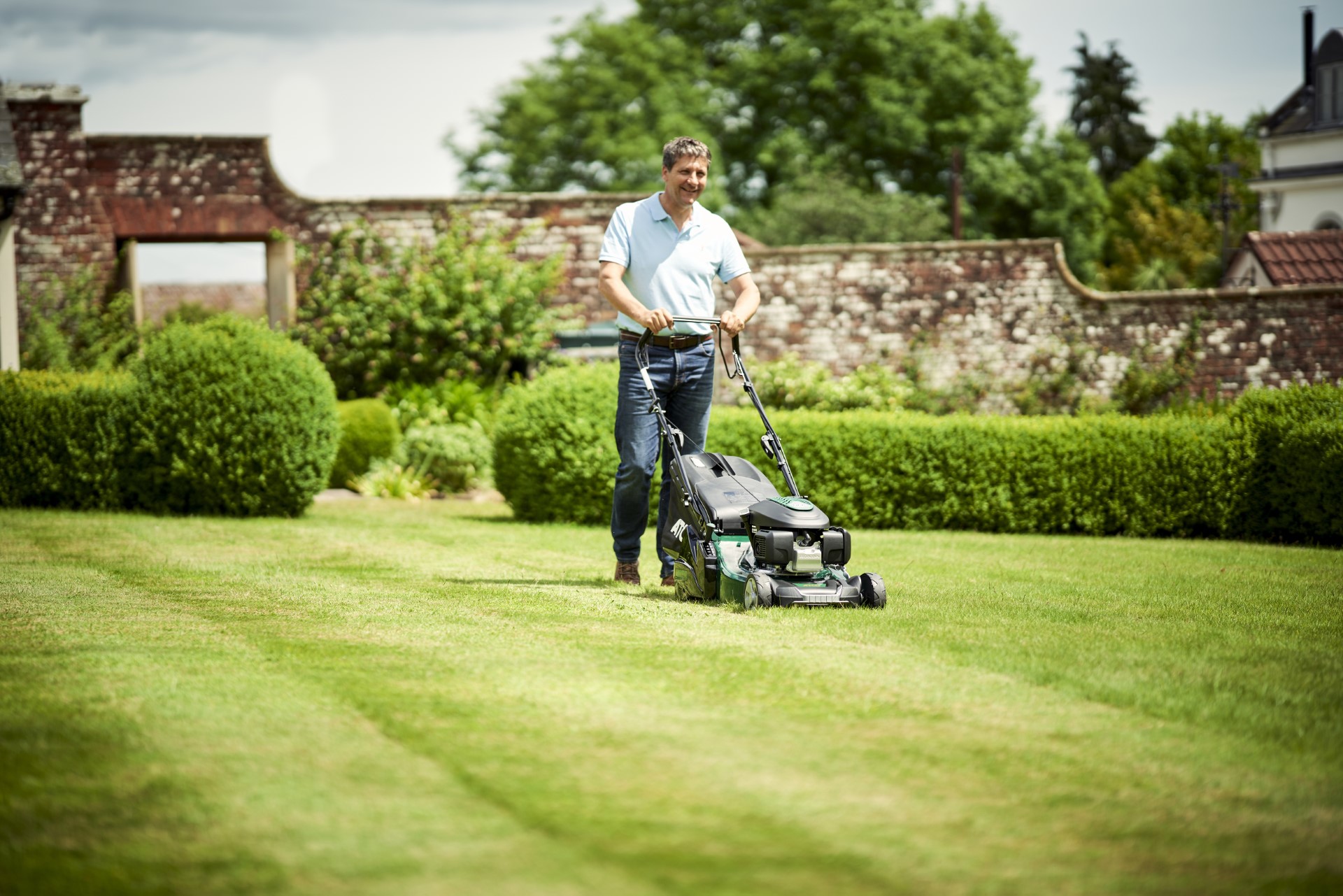
Four-Wheel Mulching Magic
Four-wheeled lawn mowers have two wheels at the front and two at back, rather than a rear roller. They will cut the grass with minimum definition; the lawn will look the same regardless of the cutting pattern used, ideal for gardens with undulating lawns. Many models come with ‘anti-scalping’ plates fitted at the front to stop your mower taking chunks out of your lawn – particularly useful if your lawn is uneven or bumpy.
There are two main types of 4-wheeled mowers – those that have the option to both collect the grass and mulch it, and those that are dedicated mulching machines!
- Mulching is the process of not collecting the grass clippings, but instead, cutting them into tiny pieces and feathering these back onto the lawn, by being so small they fall to the bottom of grass blades and act as fertiliser, returning nutrients to the soil and promoting growth.
- Mulching is particularly useful for larger lawns – with no stopping to empty the grass catcher you can quickly whizz through the mowing.
- Some mowers are described as ‘4-in-1’ meaning they have 4 cutting options – they collect the grass, mulch and side and rear discharge. If you want to be able to switch between mulching and collecting grass clippings these multi-functional machines are a great choice.
Classic stripes
The iconic British striped lawn – think Wimbledon or village bowling greens in the height of summer. If you want to achieve a striped lawn, then you will need a lawnmower with a rear roller. In general, the heavier the roller, the more pronounced the stripe it will create. The roller essentially works by brushing the grass in different directions as you go up and down your lawn. A good rotary mower with a rear roller should be sufficient to give you the desired stripe effect. Rear roller lawnmowers also allow you to cut right up to lawn edges, giving you a lawn that is fit for Wimbledon.
However, if nothing less than perfectly manicured, stripe perfection will cut it, then you are going to need a cylinder mower. Cylinder mowers can give you a much closer cut than a standard rotary model although they are best suited to flat, uniform, stone, and twig free lawns. Cylinder mowers are fitted with several blades that give a ‘scissor-like’ cut, resulting in a professional, pristine finish. When it comes to budget, cylinder mowers tend to be at the higher end of the price range but are worth the investment if you are willing to put in the time and effort it takes to achieving a professional finish. We recommend ATCO for quality cylinder mowers.
Cutting width
This refers to width of the strip your mower will cut. Put simply, the wider the cutting width the less time it will take to cut your lawn. For example, if your lawn is 20 meters wide you would have to make 49 turns up and down it with a 41cm cutting width lawnmower compared to just 38 turns with a 53cm mower – making the wider mower 30% quicker at cutting your grass.
Mowers with a wider cutting width will also have larger grass collector capacity meaning you won’t need to stop to empty it as often. It is worth bearing in mind however that the wider the cutting width, the heavier the mower is likely to be when turning and manoeuvring obstacles, as well as being on the higher end of the price scale.
To push or not to push - self-propelled or hand-propelled – who will use the mower?
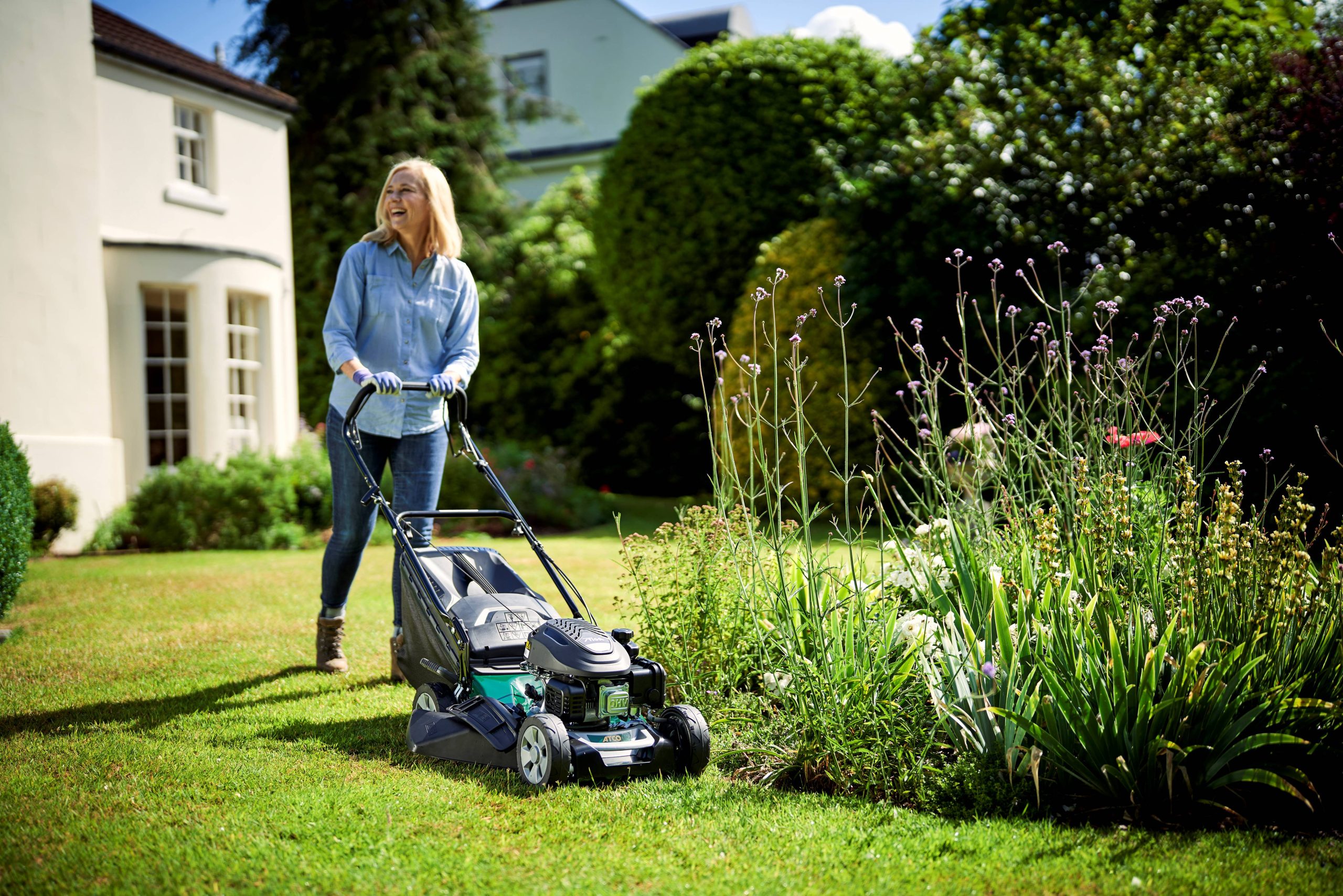
Choose between hand-propelled or self-propelled models. Hand-propelled mowers need to be pushed to drive them forward – the motor or engine only drives the cutter blade. Self-propelled models require less effort to use thanks to a transmission that drives the mower forward for you when you engage the drive. All you need to do is guide the machine in the right direction. Many self-propelled models also come with a variable speed control, allowing you to adjust the speed to suit your pace or the mowing conditions. This is particularly useful if the mower will be used by multiple users or if the user requires a more leisurely pace. Fixed speed mowers tend to be set a brisk walking speed of around 3.5km/ph which can be too fast for mature users or those with limited mobility. Variable speed models do tend to be more expensive than the fixed speed versions.
The long and short of it
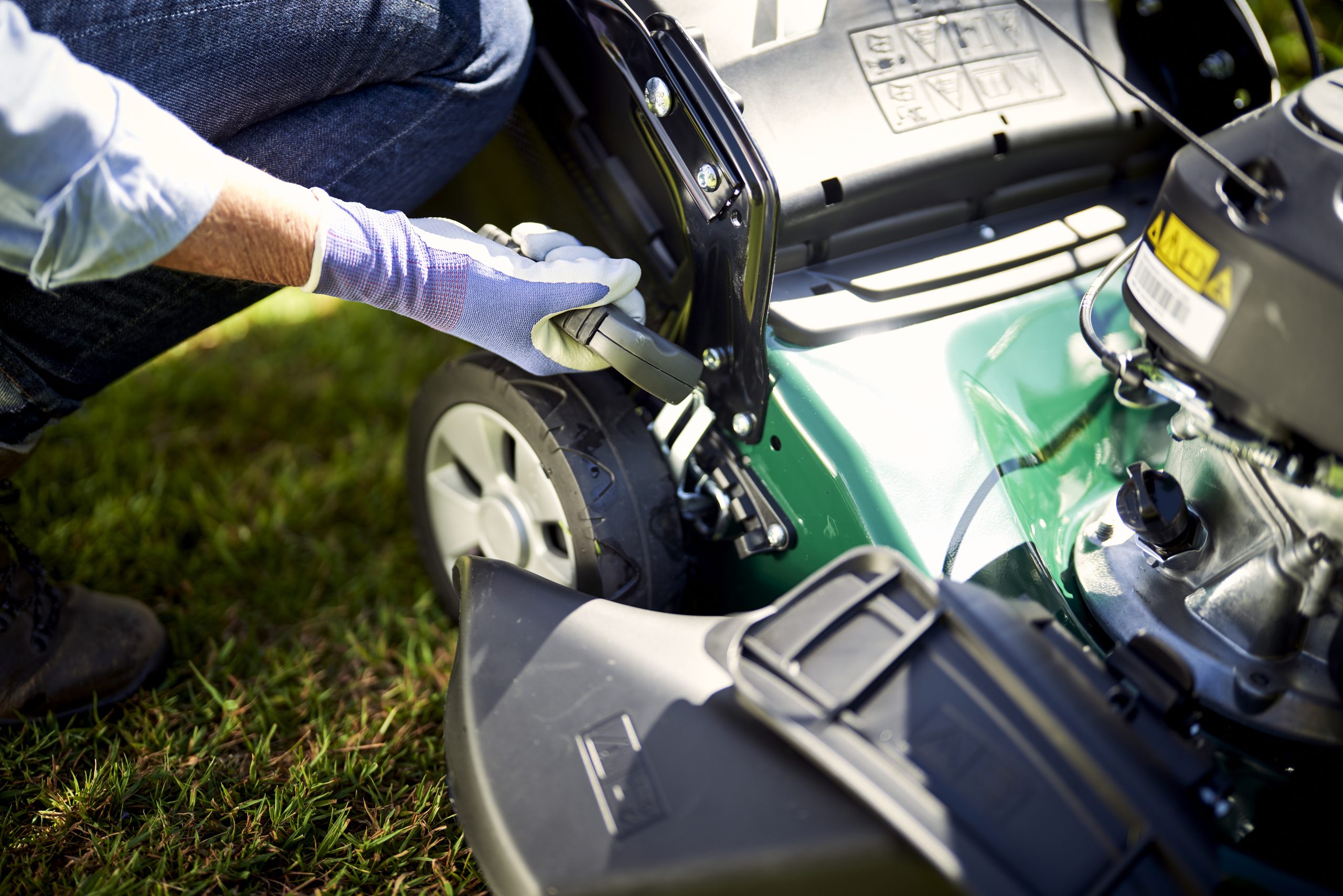
Most modern mowers are fitted with cutting height adjusters. These move the cutting deck up and down, moving the blade closer or further away from the grass, depending on how short you require the grass to be once cut. Grass can be left longer in the autumn months or during dry periods, for example, cutting on a lower setting when a shorter finish is required. Different models offer a range of cutting heights to choose from. Rotary model cutting heights tend to range from around 22mm at the shortest cut, up to around 80mm at the longest. For standard lawns, it is not recommended to cut your lawn too short due to the risk of scalping the lawn or causing it to turn brown during the summer months.
If you have a very flat, uniform lawn and require a closer cut, you will need a cylinder mower. Cylinder mowers can cut your lawn as short as 5mm depending on the model, and most are also fitted with a rear roller to create stripes. It’s worth bearing in mind however that cylinder mowers are at the top end of the price scale.
Material matters
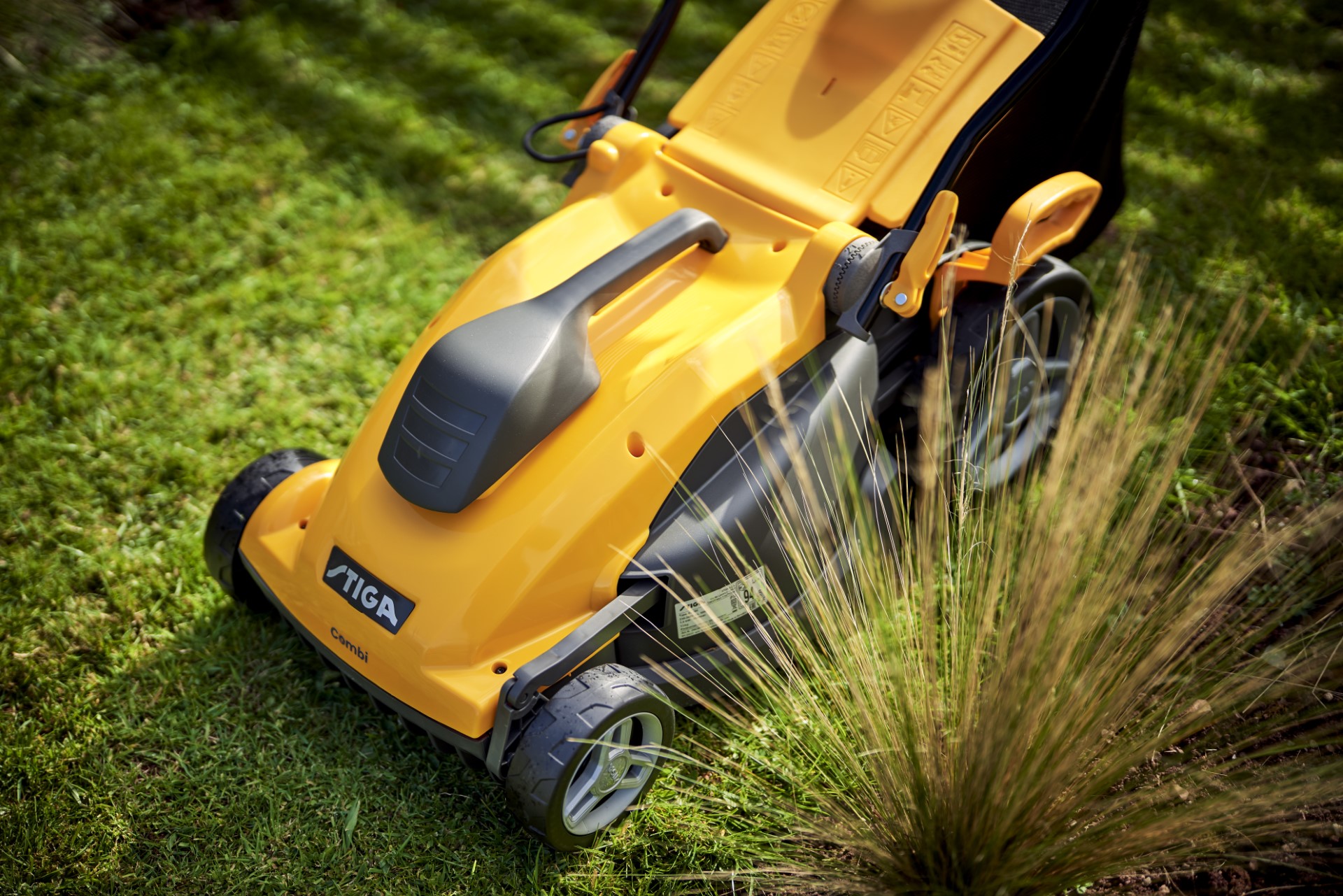
The chassis or cutter deck houses the blade and can be made from several different materials. Choose from polypropylene, steel with a coated paint finish or hybrid galvanised steel/aluminium. The cutting deck and blade determine the working/cutting width of your mower – typically from around 34cm up to around 53cm.
Smaller mowers tend to be lighter and often use polypropylene for the chassis as it is lightweight and maintenance free. Steel is more robust and hard wearing although it is heavier. Larger mowers tend to have steel or hybrid decks. Both galvanised steel and aluminium decks do not rust if they are cared for and cleaned correctly. Many modern mowers are now fitted with a deck washing port where you can attach a garden hose to a connect on the chassis to easily clean the underside of the deck after mowing.
Budget
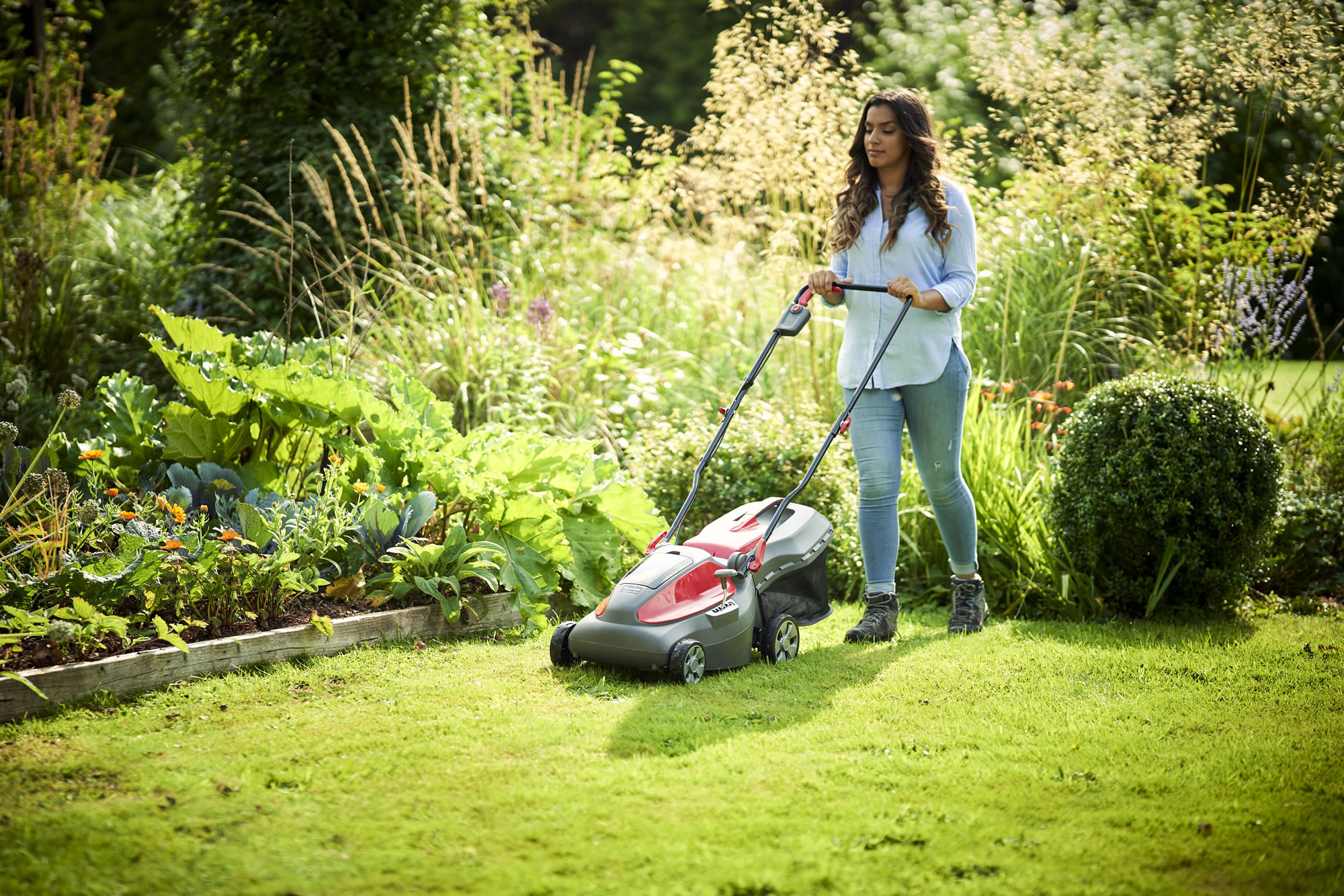
Probably the most important thing to consider is your budget. How much you are willing to spend on your new lawnmower? Prices can range any from as little as £100 to over £1000 – and as with everything, you get what you pay for.
Are you looking for a no-frills mower that just cuts your grass or a mower that gives you more options such as mulching or even a rear roller? Bear in mind the smaller cutting width your mower has, the longer it will take to mow your lawn – larger cutting width models will cost you more in money but will save you in time when mowing if you have a medium or larger-sized lawn. The more expensive models also tend to come with longer warranties and more robust materials, giving them a longer lifespan than cheaper models.
Most lawnmower websites allow you to set your budget in the search fields to help you find mowers within your price range.
Where is the best place to buy a lawnmower?
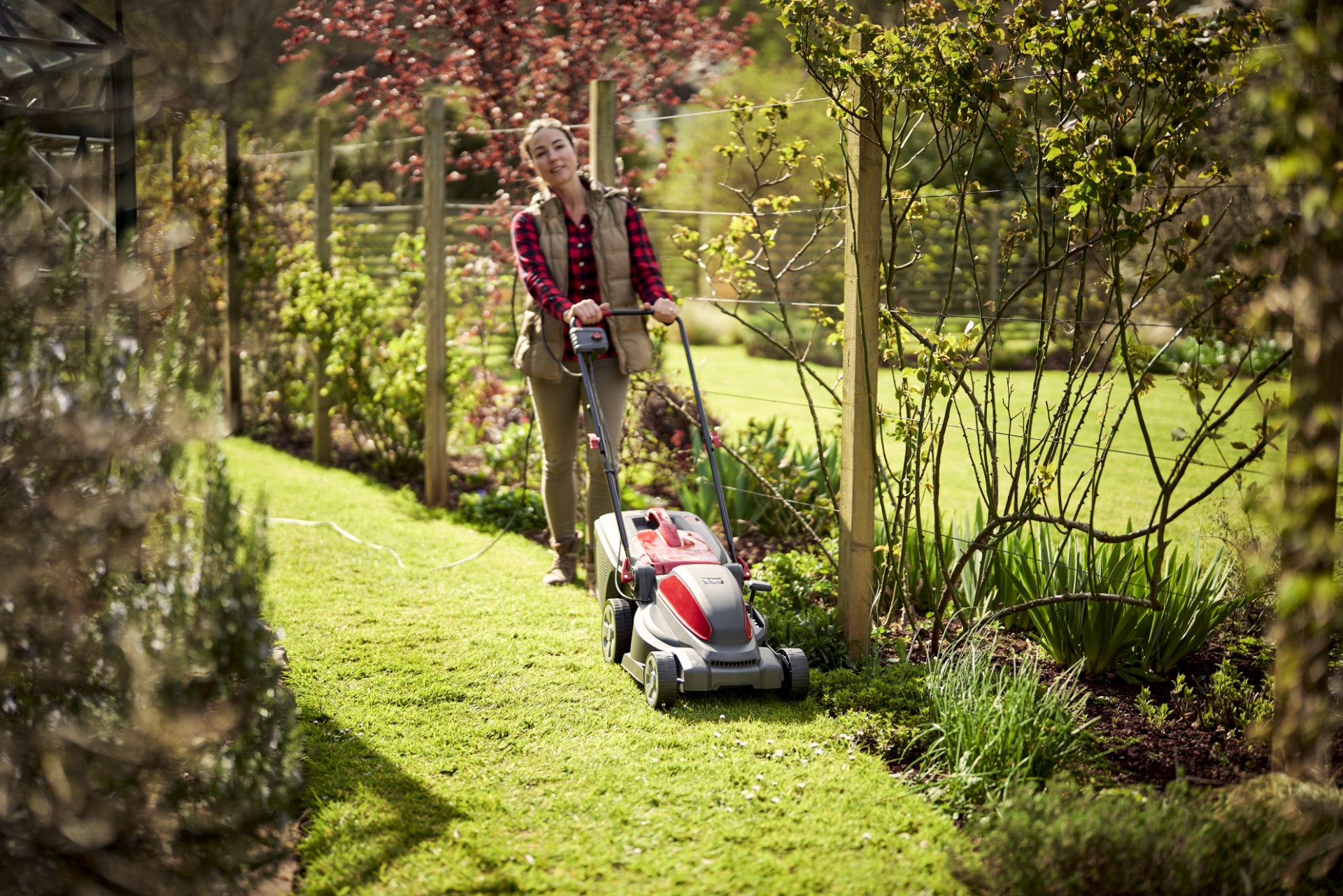
Authorised lawnmower dealerships are best placed to offer you advice on the most suitable lawnmowers and garden equipment for your garden, taking into consideration the size of your garden, the type of cut you require, the terrain, and grass collection / discharge and mulching options.
Lawn mower dealers will offer competitive prices. In addition, you will also benefit from warranty cover and many offer trade-in against your current machine, offering you a product which is fully supported and competitively priced.
Use the search function at the top of this page to find a mower dealer near you.
Buying online
When you buy online, make sure that the machine is covered by a UK warranty. You should also look to see if the lawnmower is delivered fully assembled, tested and ready to mow by a local lawnmower dealer. If not, you will have to assemble the machine yourself. Many manufacturers have ‘how-to’ videos on-line to help with assembly and helplines if you require further assistance.
Once you have purchased your new mower, read our helpful guides on how to look after your lawnmower: ‘Lawnmower Care’ and how to ‘Mow like a Pro’ with helpful mowing tips and techniques, keeping both your lawn and new lawnmower in tip-top condition!
Whether you are looking to buy, repair or service your Mower
Find your local Mower expert

